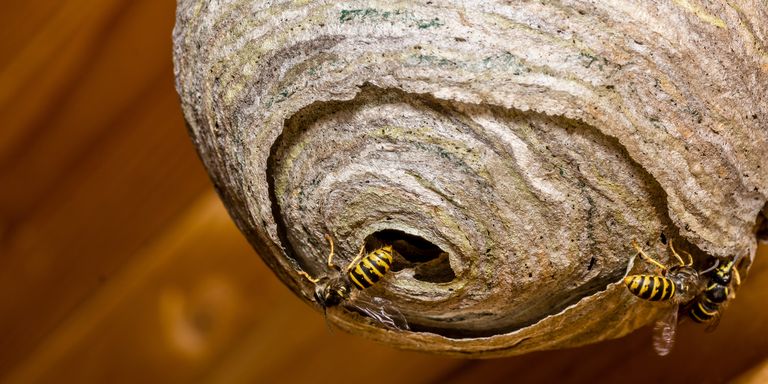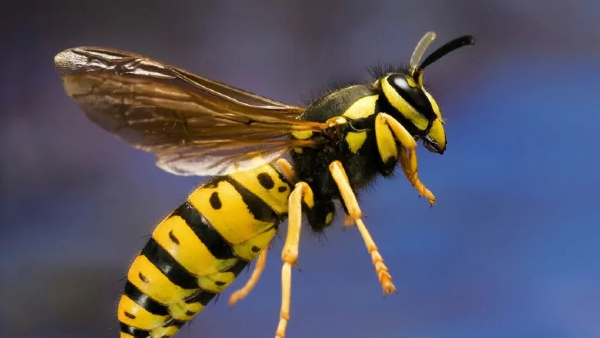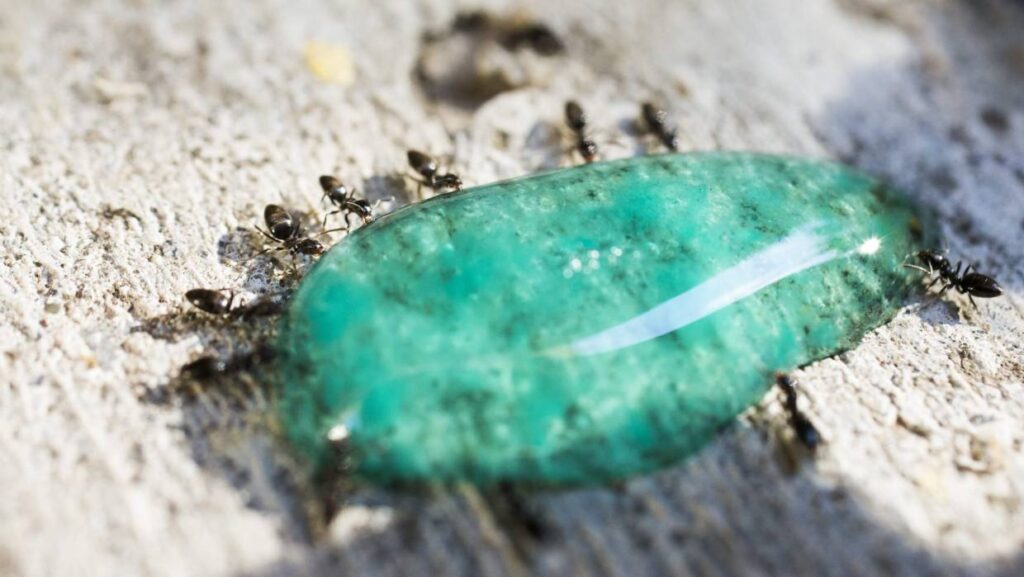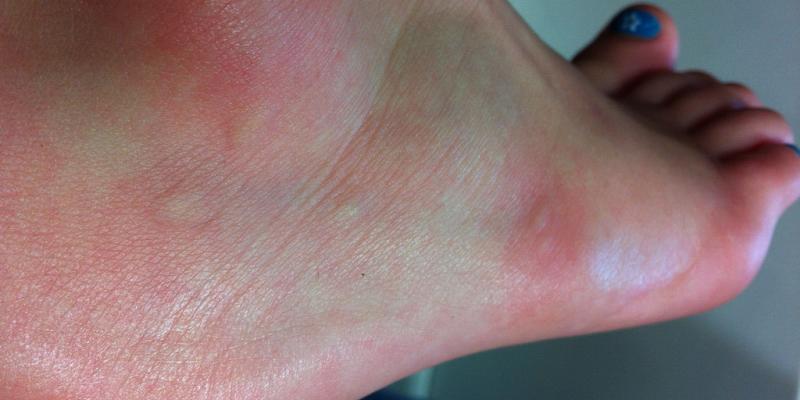How to get rid of wasps safely and stop them coming back
Have you found yourself hearing that unnerving buzz flitting around your ear? Seen the glimpse of a skinny yellow-and-black body? It can mean only one thing, it’s wasp season.
Your instant reaction might be to swat the irritant and get back to your BBQ in peace. But if you take any advice away from this piece, do not swat! Not only would it be unfair to these wasps who are actually a great source of gardening help – they’re pollinators and do a great job of controlling aphid. But also, when squashed they release a chemical alarm that signals to other wasps to attack. Not ideal.
So if you dream of enjoying your Pimms in the garden without been harassed by a swarm of wasps, try a few of these tips on how to get rid of wasps, and keep those little yellow-jackets at bay this summer.
Keep your food covered and bin clean
Wasps love nothing more than a good rummage around your bings. Make sure you empty and wash bins regularly, and keeping bins away from windows to avoid attracting wasps into your home.
Grow strong smelling plants
Smells that can be used to discourage wasps from certain areas include tomato stems, fresh mint, ground coffee and cloves,’ says

How to Wasp-Proof Your Backyard This Summer
Wasps, hornets, and yellow jackets can put a serious damper on your outdoor fun. And since populations peak in late summer, now’s the time of year when you either deal with them or risk ruining a perfectly good afternoon nursing a seriously nasty welt.
Wasp Prevention
Many flying predators are quite territorial and will not start a new nest within a couple of hundred feet of an existing nest. You can work this to your advantage by hanging a fake wasp’s nest in a visible location early in the season
Early Intervention
In late spring and early summer, keep an eye (and an ear) out for new nests being built anywhere you might not want one: under railings, awnings, play equipment, eaves, overhangs, and in any other sheltered nooks or crannies near family spaces.
Tiny new nests of just a few egg cells can be knocked off right away and stepped on if the queen (the only mobile resident at that time of year) is away foraging. Even slightly larger but still small nests — those with few dozen egg cells — can be knocked off and destroyed using a bit more caution: Pick the coolest part of the day (sunrise is good) and dress in gloves, a high-necked top with long sleeves, long pants tucked into socks, and a head net, if you have access to one, or a kerchief worn snug over your hair.
Sometimes, you can just leave the nest alone. Wasps, hornets, and yellow jackets aren’t totally horrible. The predators hunt grubs, aphids, and houseflies — other pests that annoy at outdoor dinners and in your garden. Most wasps and hornets are generally uninterested in you and not particularly aggressive unless disturbed, and all of them will die come a hard frost or two in the fall; only the queen overwinters to start a brand new nest in the spring. So if the nest is in an out-of-the-way spot, and you don’t have curious pets that might disturb it, leave it alone and let nature take its course.

How to Get Rid of Wasps in Bushes
Wasps often build their nests within the protective cover of bushes or shrubs. As a result, the area around the bush becomes off-limits, because wasps vigorously defend their nests if they think the nest is in danger. Anybody passing by the bush becomes a possible target of painful stings. Get rid of wasps in bushes with a product containing pyrethrin, a natural chemical extracted from pyrethrin daisies. Pyrethrin is fast-acting, less toxic than pesticides and won’t harm the plant.
Inspect the nest from a safe distance during the day. Be sure you know exactly where the nest entrance is, and don’t attempt to spray the wasps if you aren’t sure of the location. Spray the wasps at night or early in the morning when temperatures are cool and most foraging wasps are settled in the nest.
Mix a pyrethrin insect spray concentrate at a rate of 3 to 5 tablespoons of concentrate in 1 gallon of water. Place the mixture in a clean pesticide sprayer. You can also use a premixed, ready-to-use spray. Light the nest safely with a lamp placed on the ground to the back or side of the nest. Never hold a flashlight in your hand, because the light shining in the entrance will agitate the wasps and provoke an attack.
Wear gloves, hat, boots and a bee veil or protective goggles. In addition, wear thick clothing, including long sleeves, sturdy pants and heavy socks. Line the inside of the pants with brown paper bags, and tuck the pants into your socks or boots. Stand at least 12 to 15 feet away from the nest, with the wind at your back. Aim the pyrethrin spray directly at the entrance to the nest. Continue to spray until the nest is saturated.
Things You Will Need
Pyrethrin insect spray
Pesticide sprayer
Lamp
Protective clothing
Brown paper bags

How to Get Rid of Wasps: Learn Everything About Them
Every householder experienced hard times getting rid of wasps in the house or outside. It is unbelievable that these insects appear in your life every spring and summer season.
I’ve tried plenty of wasp control products, including natural and non-chemical sprays and wasp traps. I have tried plenty of methods on how to deal with wasps and discovered TOP insect killers that will help you get rid of wasps outside and inside your house.
Besides, I have examined questions about how to distinguish different types of wasps and how to prevent their return to old nests. Take a look at my detailed guide on wasps and make a deliberate choice of the best killers to destroy these buzzing insects.
Wasps Identification
Probably, you are aware of the appearance of a classic wasp – it is an insect with black and yellow stripes. The length of the body of a wasp can range from 0.6 to 4 inches. There are wasps with four webbed wings as well as there exist wingless wasps.
Wasps Lifecycle
The wasps live two lives, I’d even say. The paradox is that the life cycle of wasps is pretty similar to how bees live. The only difference is about the female wasp. It lives alone in the winter period, then she creates the whole family again.

Get Rid of Wasps in Home & Backyard Using These Steps
Identify the kind of wasp
Before getting rid of the bees, you should know the species you’re dealing with. Bees and wasps often look the same, but the damage or threat they bring varies according to their kind. The treatment for each sting also differs.
Here are the usual types of bees and wasps you’ll encounter:
Ground bee – Ground bees are not harmful and never aggressive. Only female ground bees sting, and they will only sting when feeling threatened. They do not form hives but are often found nesting underground. The entrance to their nests is usually patches of bare soil.
Honey bee – The Honey be is a small bee with a barrel shaped body and a fury appearance, they usually live in trees or hollow spaces and their nest have a unique honey comb look and is a white or yellow colour.
Masonary bee – Masonry bees have a similar appearance to honey bees and get their name from the fact that they use mud, clay and other building materials in the construction of their nests.
Bumble Bee – There are over 250 species of bumble bee (genus Bombus). They have round bodies and a fuzzy, hairy appearance, they usually have a white and buff colour on their tails and live in very small colonies. There life span is around 28 days.
Yellowjacket – Yellowjackets are not bees, they are wasps. They are sometimes mistaken for bees because of their looks and their sting. The attacks of yellowjackets can be deadly for people who are allergic to their stings. They can also bite their target first before they sting.
Hornet – Hornet is the largest of the eusocial wasps, and they look similar to the yellowjacket. Their stings are considered more dangerous than those of bees. They usually build their paper nests in the shape of a teardrop.
If you find the hive inside your home, never block their entry point. Blocking will only encourage the bees to find another exit or entry point around your home. Here’s what you should do:
Step 1: Make sure you are physically protected. Wear bulky protective clothing before getting near the hive.
Step 2: Spray the hive with pesticide after sunset. This will lessen the possibility of getting stung.
Step 3: Check by morning if there’s any activity happening inside the hive. Spray pesticide again at dusk time, if necessary.
Step 4: When no other activities are observed, and you’re sure the bees are dead, you can remove the nest by placing a strong bag over the nest and removing it from it purchase. Although most species of bees will only use a nest for one season.
Conclusion
There’s a fine line between protecting the environment and protecting your family and home. In case you find the hive inside your walls or deep underground, it is better to seek the help of professional pest control. They are more knowledgeable about how to deal with these complicated situations.

